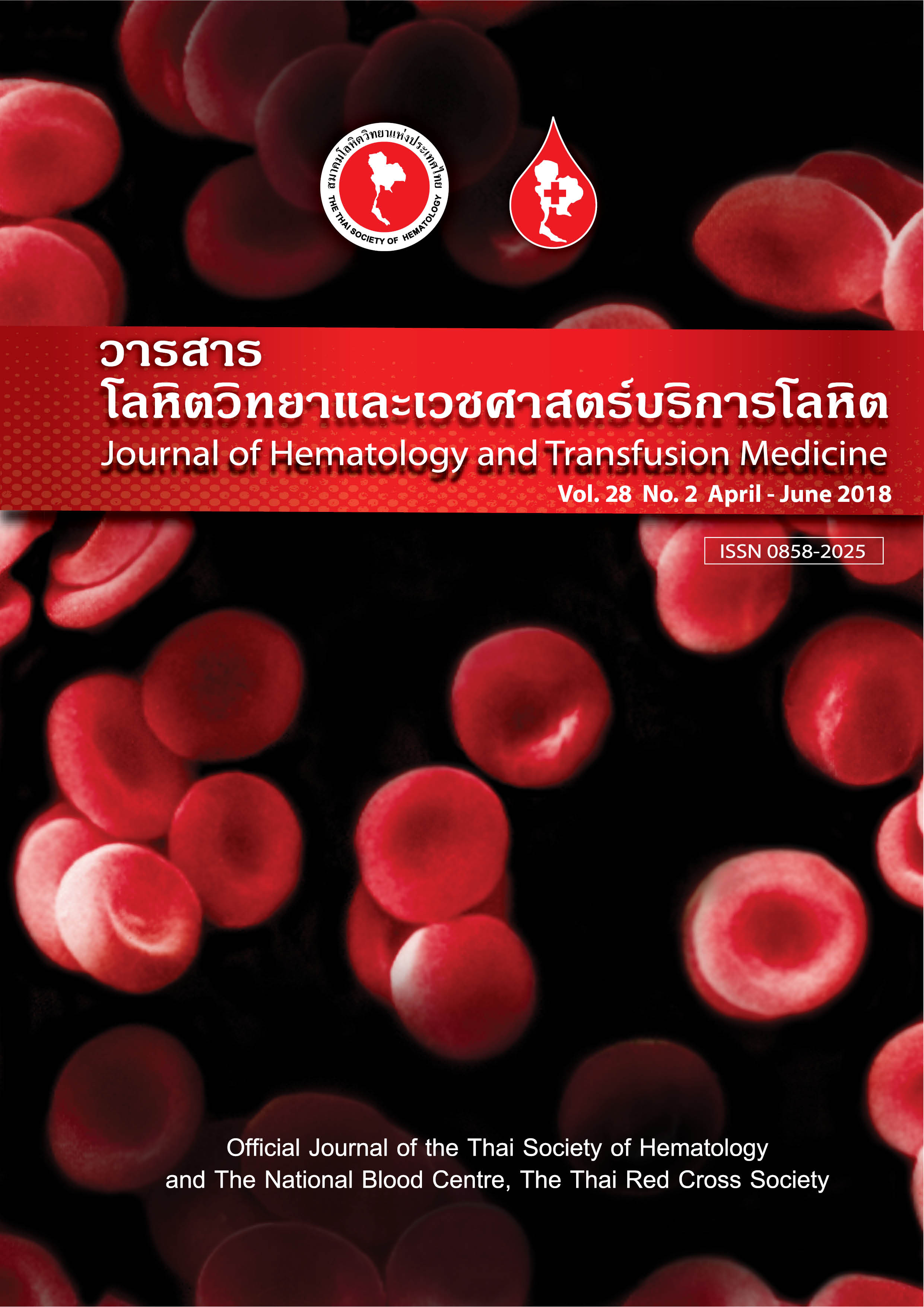Outcome of newly diagnosed DLBCL-NOS treated with R-DA EPOCH and R-CHOP: The report from King Chulalongkorn Memorial Hospital (ผลการรักษามะเร็งต่อมน้ำเหลืองชนิดบีเซลล์ตัวใหญ่ด้วย R-DA EPOCH และ R-CHOP ที่โรงพยาบาลจุฬาลงกรณ์)
คำสำคัญ:
Diffuse large B cell lymphoma, immunochemotherapyบทคัดย่อ
Abstract
Objective: Since the introduction of rituximab (R), outcomes of diffuse large B cell lymphoma (DLBCL) have
significantly improved. R-CHOP (C-Cyclophosphamide, H-Adriamycin, O-Vincristine and P-Prednisolone) has
been the standard treatment over the past decade. Subsequent data have shown the benefit of adding etoposide (E) and administrating treatment in a dynamic dose adjusting fashion so called dose-adjusted (DA) EPOCH. Several phase II trials demonstrated promising outcomes of R-DA-EPOCH. We hypothesized that R-DA-EPOCH would be more effective than R-CHOP in DLBCL. Herein, we compared outcomes of patients with DLBCL treated with R-CHOP and R-DA-EPOCH at our institution.
Methods: We identified newly diagnosed DLBCL among patients treated with at least three cycles of R-CHOP or R-DA-EPOCH at King Chulalongkorn Memorial Hospital between January 2011 and August 2016. We described and compared baseline characteristics, outcomes and toxicities among these patients.
Results: During the study period, 178 newly diagnosed DLBCL-NOS were treated with CHOP-like chemotherapy at King Chulalongkorn Memorial Hospital. The overall response rate was similar between the 2 groups (R-CHOP 97.3% vs. R-DA-EPOCH 92.9%). With a median follow-up duration of 32 months, 2-year progression free survival (PFS), overall survival (OS) for the entire cohort was 89% and 92.1%, respectively. R-CHOP treated patients had similar 2-year PFS but marginally better 2-year OS than R-DA-EPOCH cohorts (90.2% vs. 80.9%, P = 0.09 for PFS and 93.1% vs. 85.3%, P = 0.05 for OS). R-DA-EPOCH had more grade III/IV hematological toxicities.
Conclusion: According to our study, R-DA-EPOCH resulted in comparable outcomes
including response rate and survival to R-CHOP in DLBCL-NOS but presented more adverse events. Due to
limitations in our study further large prospective cohort studies are required.



